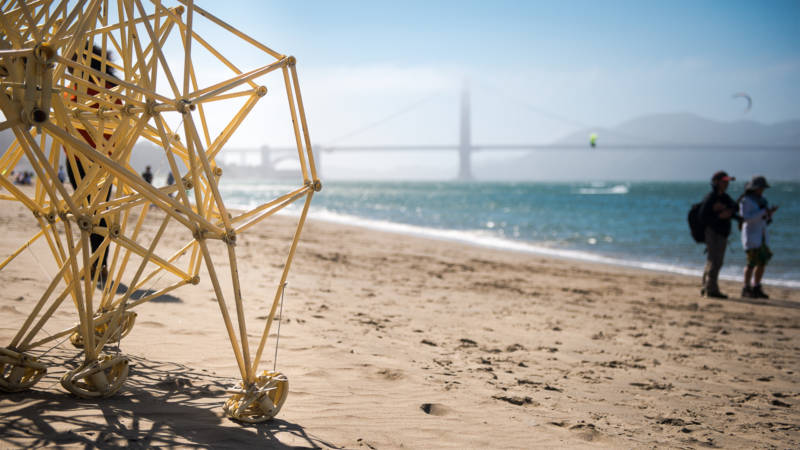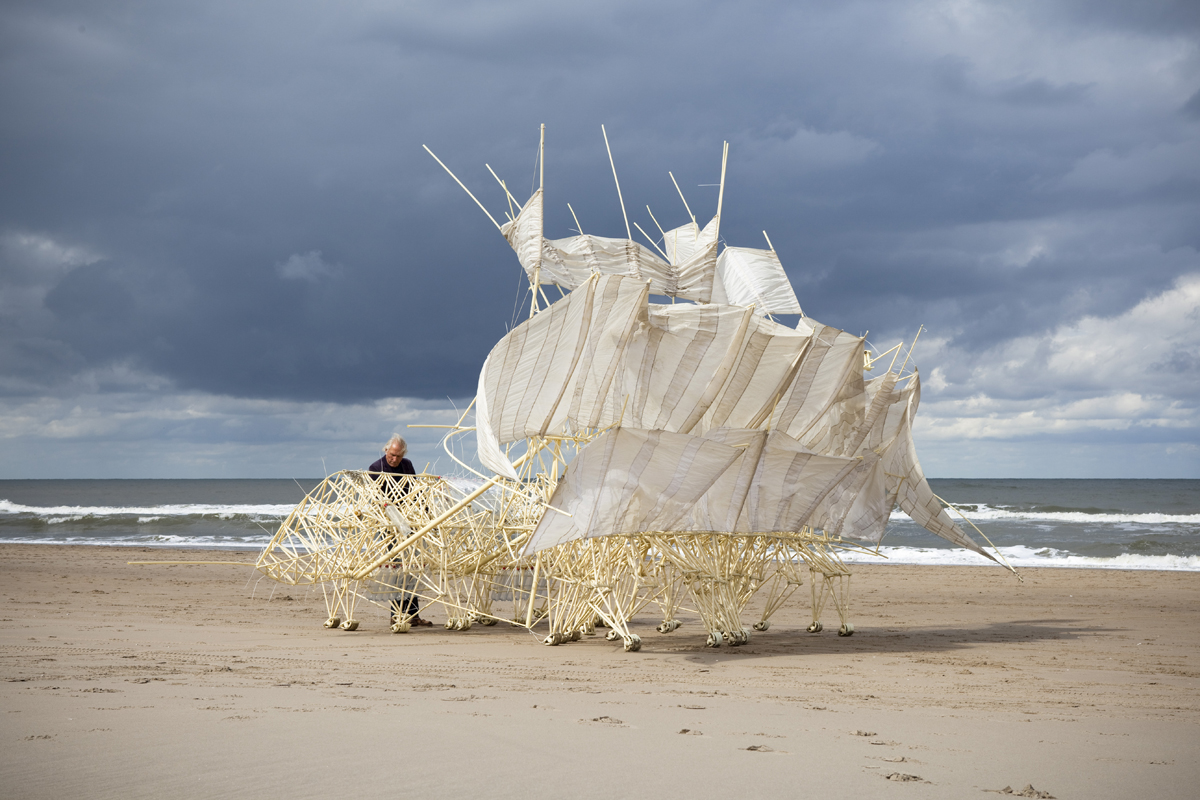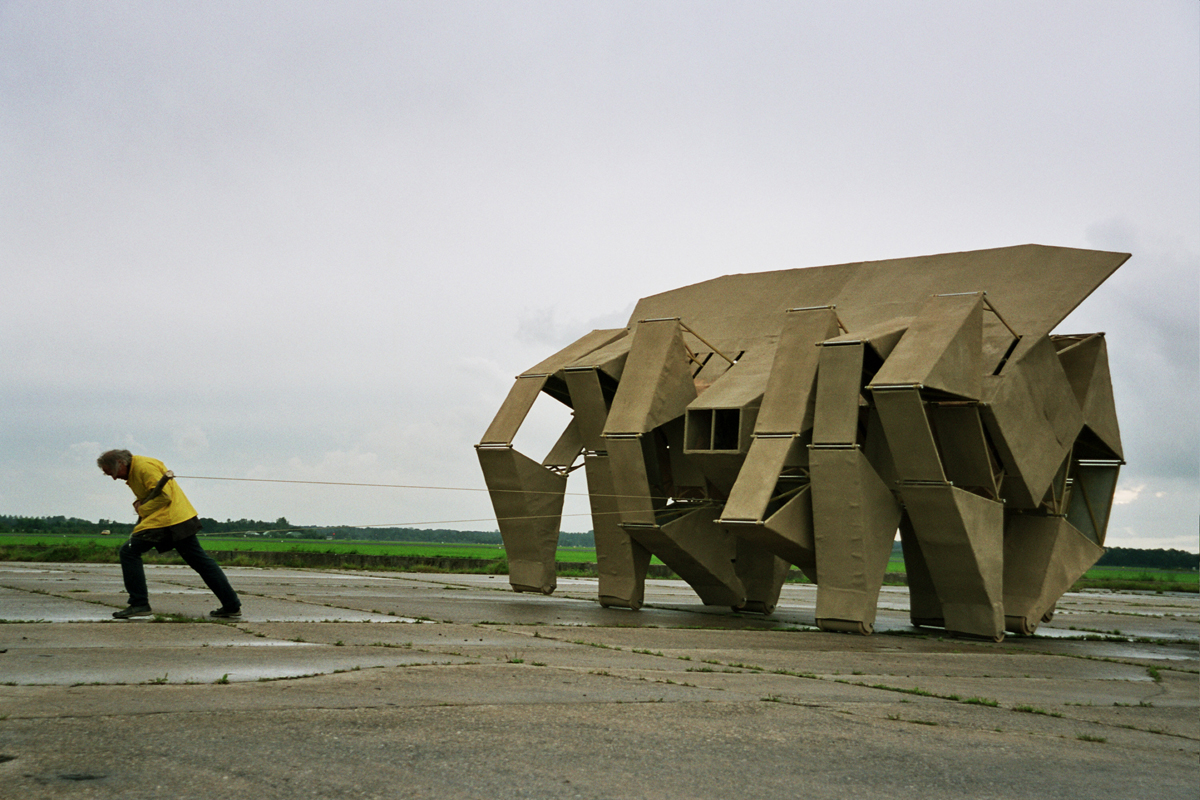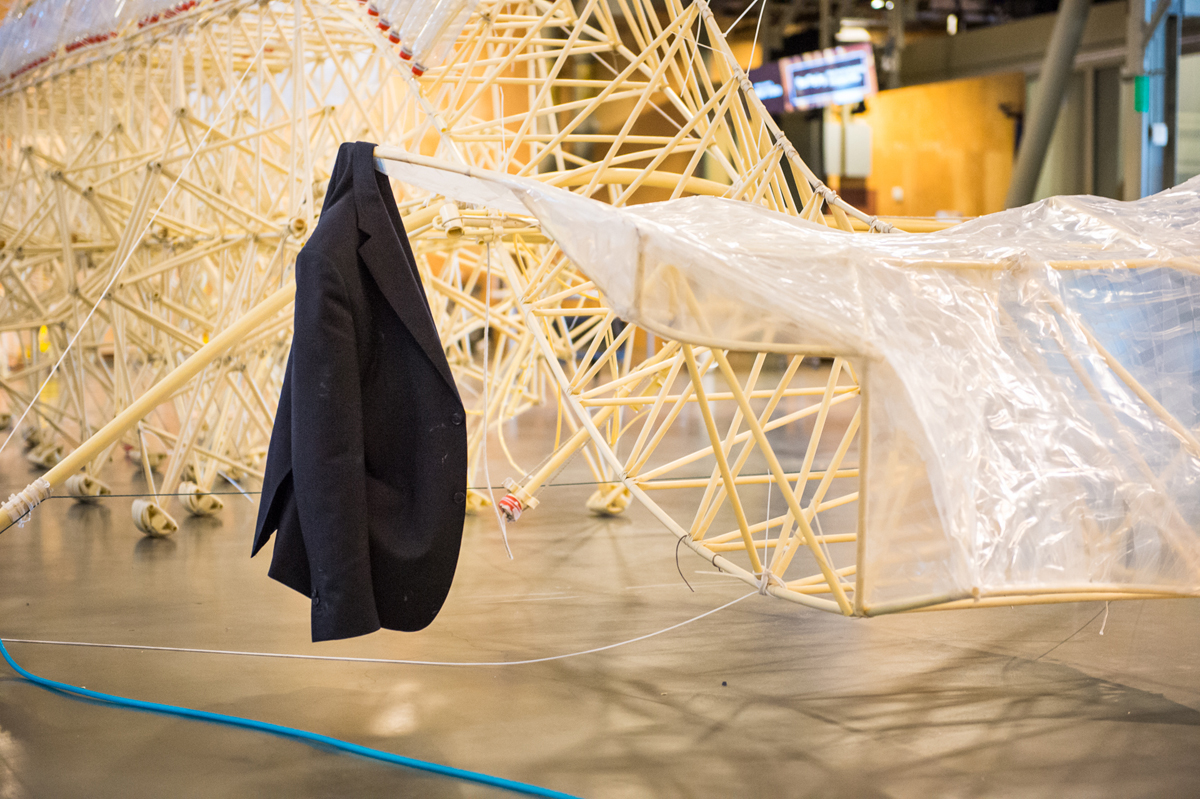“The floor is very slippery here,” said Theo Jansen, helpfully positioning his foot against a flailing leg of Animaris Suspendisse as it uncannily propelled itself across the floor of the Exploratorium.
The Netherlands-based Jansen was in town to celebrate the opening of Strandbeest: The Dream Machines of Theo Jansen, a traveling exhibition organized by the Peabody Essex Museum of Salem, Mass. that brought the “dream machines” to the Bay Area for the first time. Animaris Suspendisse is used to moving across the hard-packed sands of Dutch beaches, not a museum’s polished concrete floor.
Resembling a cross between a Leonardo da Vinci flying machine and a plastic Erector Set, Suspendisse is the latest and largest strandbeest to date, measuring in at 43 feet of PVC tubing, rubber tubes, zip ties, plastic bottles and rip-stop nylon sails.
Jansen began building the beests in 1990, prompted by the idea of creating a herd of machines that might be able to autonomously repair the Netherlands’ eroding coastline by moving sand from the surf zone to the dunes farther inland, continuously. In the nearly three decades since, the strandbeests have evolved over distinct periods of time — mapped on an Exploratorium wall — to become animated skeletons propelled by the wind, capable of storing compressed air and able to sense their positions on the beach by testing the hardness of the ground and the depth of the water.
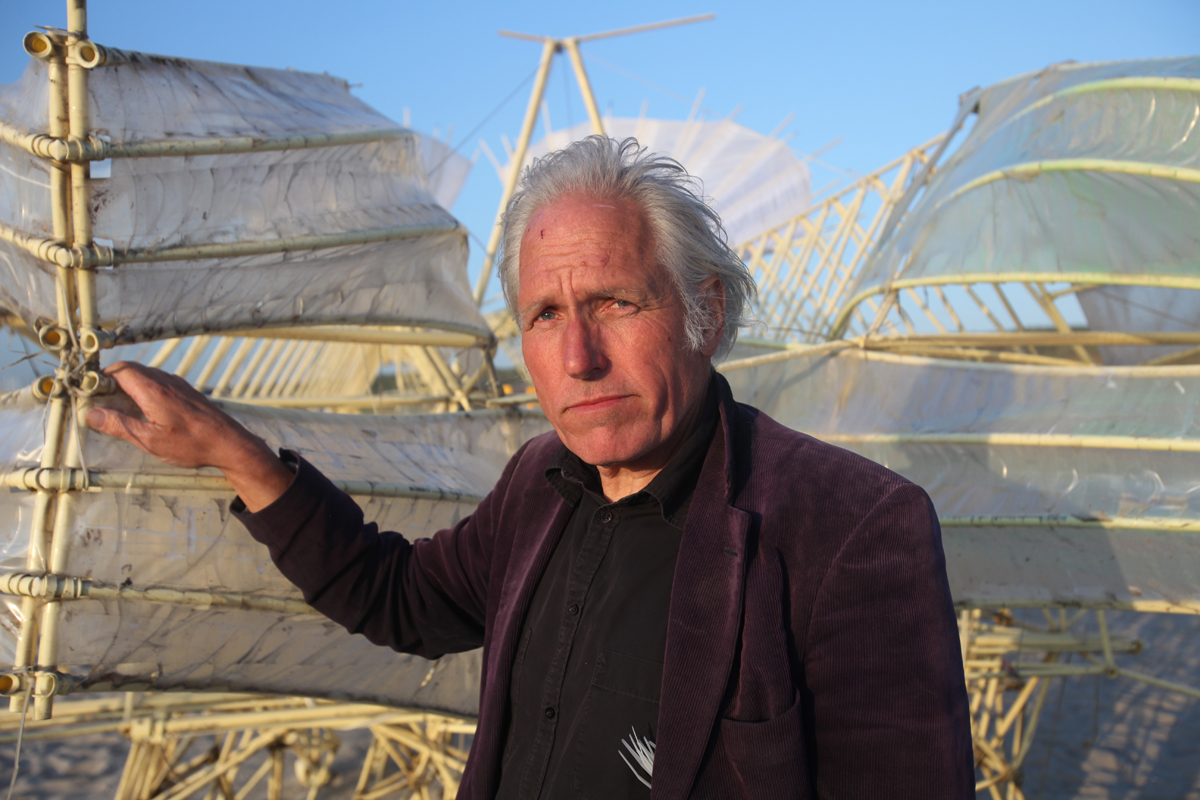
As for their intended purpose? The Exploratorium wall text explains, “The strandbeests did what any creature would do — they ignored human interests and pursued their own: survival and proliferation.” In other words, the beests are less interested in saving the Dutch coastline than they are in taking long walks on the beach.
